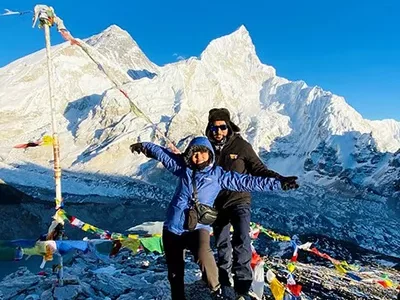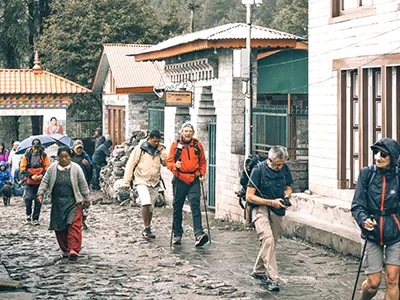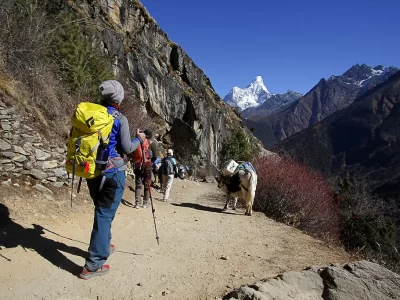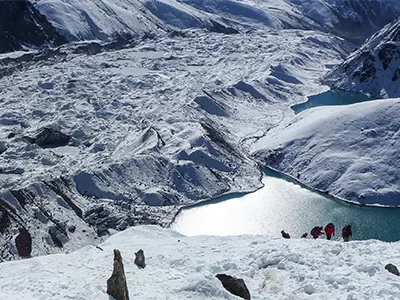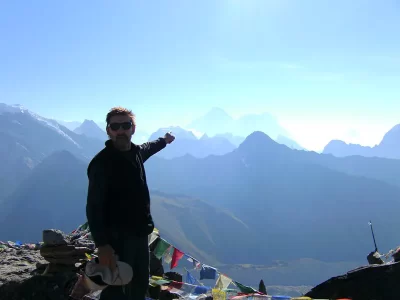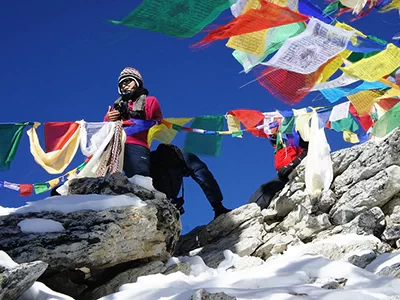Mid-December to the end of February is the winter season in Nepal. At this time, trekking at a high altitude might be challenging. This blog will give information about Everest Base Camp Trek in February. Hiking to Everest Base Camp in the dead of winter, when the mountains are covered in snow, may be an experience like no other.
Due to the extreme weather, the Everest Region sees fewer trekkers this month. During this season, you may expect the most minor crowded trails and the clearest scenery.
Trekking to Everest Base Camp is doable, despite the extreme temperatures and wind chills you will encounter, provided you are well-prepared.
Highlights of an Everest Base Camp Trek in January
- A thrilling mountain flight to and from Lukla airport
- Breathtaking view of snow-covered Everest and other Himalayan giants
- Full attention and friendliness of the local tea house owners and villages
- Breathtaking vistas of the snow-capped mountains and a less crowded and peaceful trekking experience
- Chance to witness the clear blue skies with breathtaking mountain views and beautiful sceneries
- Stunning sunrise or sunset view at Kala Patthar (5,643 m)
- Views of Sagarmatha National Park covered in snow
- Opportunity to see the Himalayas in all their snowy glory
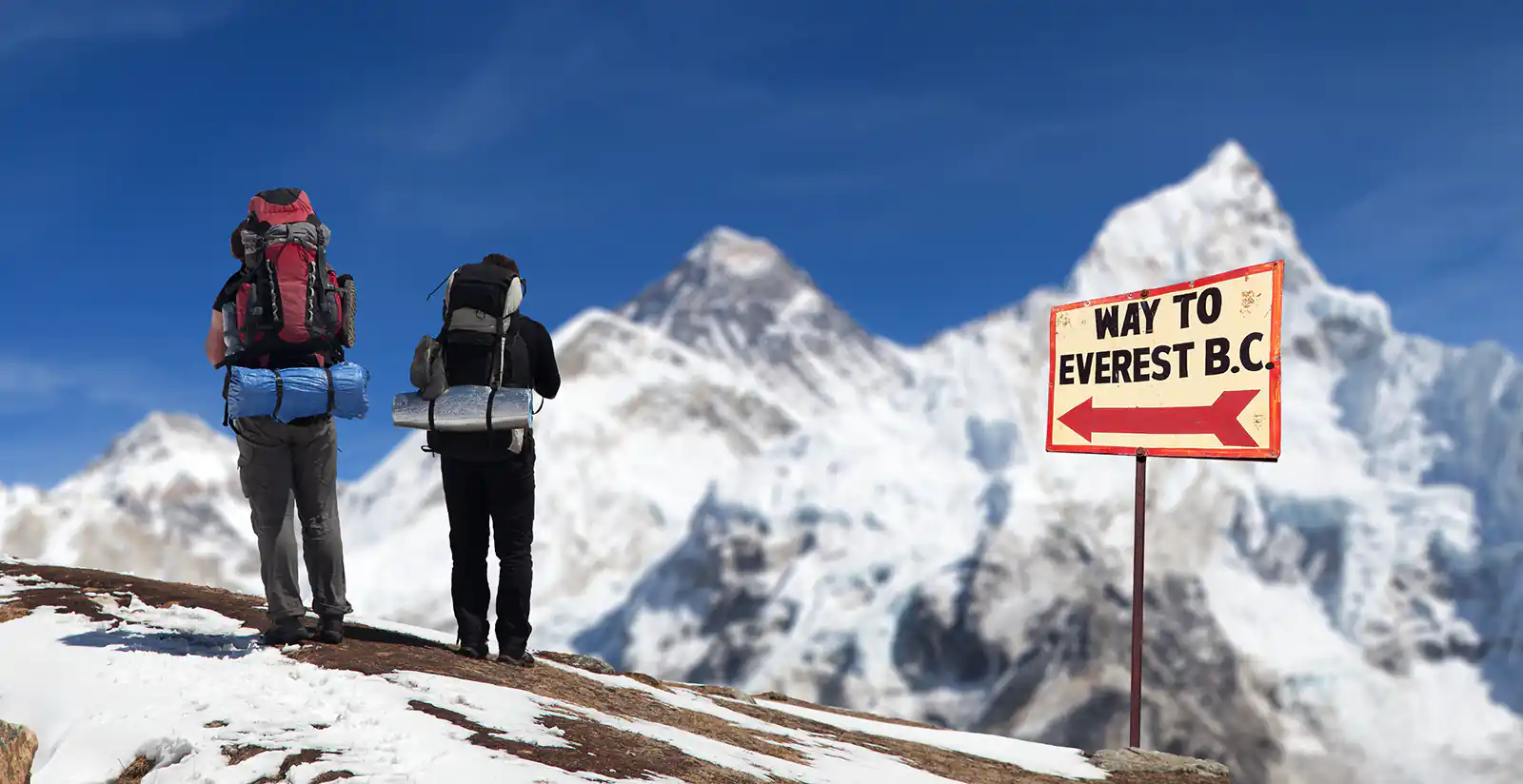
Everest Base camp Temperature in January
The days are lovely, but the nights and mornings are chilly. Daytime highs in the Everest region often hover in the 8-12 degree range. Temperatures plummet to around -17 degrees on average overnight. Even though it’s snowing, you can still get on your journey as soon as it stops.
Lukla (2,829 m): Most expeditions to Everest’s base camp start and end here. In this region, temperatures average roughly 2.8 degrees Celsius. It can go up to 8.5 degrees during the day. As low as -2.8 degrees Celsius has been recorded during the night.
Namche Bazaar: at an altitude of 3,463 meters, it is a commonplace to rest and adjusts to the altitude. The world’s highest commercial building is here as well. Around -6 degrees Celsius is what you can expect here regularly. Temperatures can fall to ten degrees below zero during the night. However, daytime temperatures are pleasant at -3 degrees Celsius.
Dingboche: at 4,483 meters, is another common place to pause for the day to acclimate. Daily average temperatures here hover at 7.2 degrees below zero Celsius. The average low at night is -15.3 degrees Celsius, with highs in the daytime at 1 degree Celsius.
The average daily temperature in Lobuche (4,910 m) is -9.7°C. The average temperature is around -18.3 degrees Celsius during the night and morning. However, daytime temperatures average -1.1 degrees Celsius.
You will spend the night in Gorak Shep (5,180 m), the highest point on the Everest Base Camp Trek. Temperatures here average around -10.9 degrees Celsius. It gets much colder at night and in the morning, with temperatures averaging approximately -19.6°C. The average temperature rises to -2.1 degrees Celsius during the day.
Costs and Crowds
You can find a place to stay at any teahouses along the Everest Base Camp trek or in the greater Everest region during the winter because it is the off-season. However, many people in the area go to Kathmandu during the winter. Therefore teahouses in the mountains (especially those at higher elevations) may be closed. It’s a good idea to trek with a guide because they know which communities keep their doors open during the off-season.
Since fewer people will be on the trail of Everest Base Camp Trek in January, you may get better lodging, food, and transportation deals, even if prices are similar to those for the rest of the year. Flights to Lukla and the best teahouses can sell out quickly during the busy season. Planning is essential to avoid missing out on your preferred flight schedules or staying in a less desirable establishment (perhaps for the same price as somewhere nicer). Not much of a problem like this should arise in January.
You may expect to have the trails around Everest nearly to yourself if you go in January, as opposed to the busier months of October or April. Since EBC is Nepal’s most well-known and busiest trek, this could significantly improve your trip.
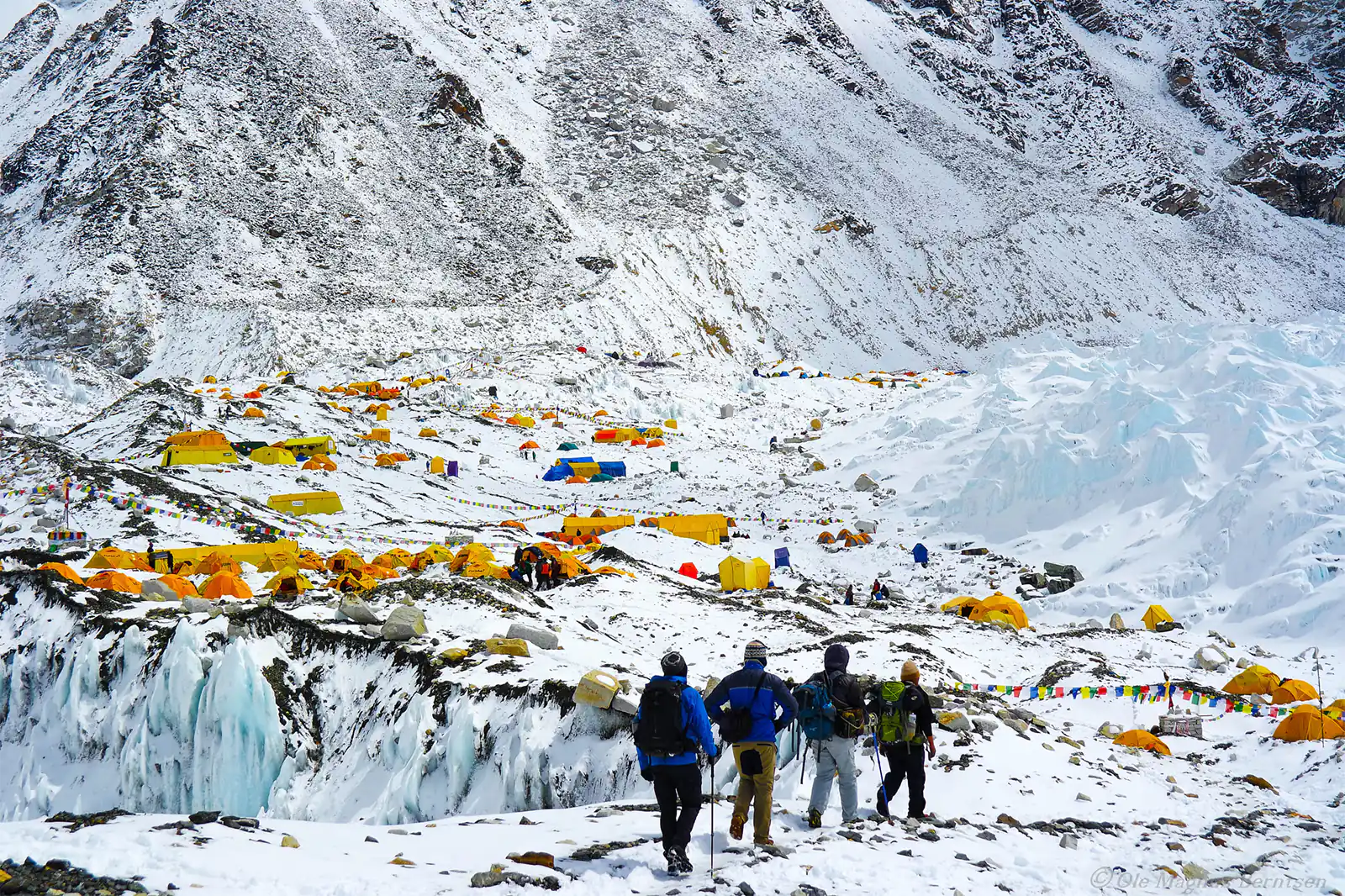
The Best Ways to Get There
Some hikes at higher altitudes should be advised in January. There will also be snow, making some areas completely inaccessible. It’s not a good idea to attempt a trek like the Three Crossings Trek, which involves crossing a high pass in the winter because the passes are likely to be closed due to snow. If the weather gets too terrible, your guide may decide it’s not safe to continue, and you may have to turn around at any point.
This is optional if you go hiking in January, though. Snow can also close roads unseasonably early or late. Treks that stay below 13,000 feet will be more pleasant and safer, but it is still essential to monitor the weather conditions along the way (or have your guide check for you).
Consider a shorter trip in the Everest region that doesn’t go all the way to Everest Base Camp unless you’re an extremely experienced trekker who knows they’ll be comfortable with the cooler weather at high altitudes. Namche Bazaar is a two-day journey from Lukla and makes an excellent base for exploring the region on foot. Namche Bazaar is less likely to experience altitude or temperature-related concerns at this time of year, and the vistas should be stunning.
January is also a great month to plan a lavish vacation. Luxury lodges in the Everest region are an excellent option for anyone with more to spend on a trip (such as Yeti Mountain Homes and Everest Summit Lodges). This type of vacation is unique year-round, but in the winter, you may seek refuge from the cold in a hotel that is just as homey and charming as any boutique hotel in the city.
Everest Base Camp Trek
Luxury Everest Base Camp Trek
Everest Base Camp Short Trek
Preparations and What to Bring
Prepare yourself for the harsh January weather, not merely for your comfort but also your safety. Even though most teahouses offer blankets, it’s unlikely they’ll be warm enough for the cold. It’s best to use a sleeping bag designed to keep you warm in temperatures as low as -30 degrees Celsius. At higher altitudes, even if the sun will warm things up in the day, you will still need to trek in warm garments, so bring a warm down jacket (down is good because it is light; if you need to take it off and carry it in your bag during the day, you won’t be burdened by something heavy). Evening and nighttime wear that is warm, such as woolen hats, gloves, stockings, and scarves, is also required.
If you don’t want to bring your winter trekking gear home and don’t need it, you can buy or rent almost everything in Kathmandu.
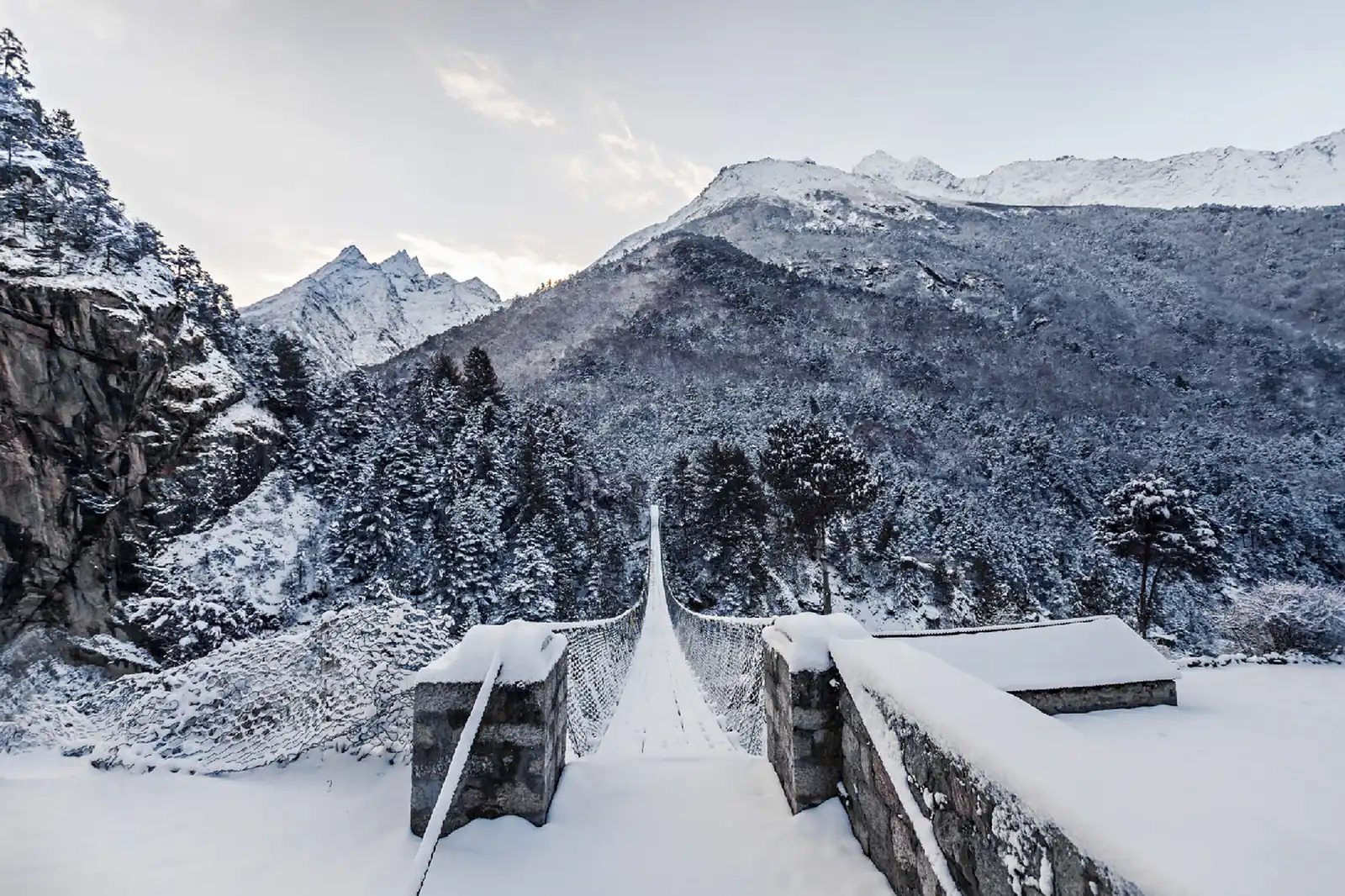
Transportation To And From
Flying from Kathmandu to Lukla is the quickest route to the Everest region. January is a relatively dry month in Kathmandu, with less chance of rain causing delays and cancellations than in other months. Even if the weather in the Himalayas is fine, this could delay or cancel flights to or from Lukla.
January Festivals in Everest
Spending New Year’s Eve on a trip to the Everest region might be your best decision. Visiting Namche Bazaar on December 31st is a great way to celebrate the New Year while also seeing the mountain town’s vibrant nightlife and local pubs. Please remember that alcohol’s effects are magnified, and onset is accelerated at higher altitudes.
Festivals of all religions in Nepal (Hindu, Buddhist, and others) are traditionally timed according to the moon (this means that a festival that falls in January one year may fall in December or February the next). The Lhosar Festival is typically held in January but may occur at other times. The Gurung, Tamang, and Sherpa peoples of Nepal celebrate the New Year with this Buddhist festival since their ancestors originally came from Tibet. Given that most of Everest’s locals are ethnic Sherpa, you can find yourself amid celebrations if you happen to be here during Lhosar.
Fewer people mean less stress on your Everest Base Camp Trek in January
Fewer people are on the trail in January, making it a great time to go hiking. In January, there are a surprisingly small number of hikers on the scenic paths. Therefore, you can relax and unwind in January’s quiet on the trails.
What Stunning, Vivid Scenery
In January, the snow-capped peaks of the mountains are at their most breathtaking. You will have a clear view of the scenery and mountains in the area. Open meadows can be viewed from high above hills along the route to Everest Base Camp. The magnificent snow-capped mountains are also on display.
Kala Patthar, the Khumbu Glacier, and Namche Bazaar all fall within this category. These locations have some of the world’s most stunning panoramas throughout January.
That’s also prime time for photographing the countryside and the mountains. There are few chances of other hikers photo-bombing your trip, and the vistas are clear and enchanting.
Due to the low volume of hikers, you will have the trail all to yourself. Therefore, you can relax and take your time to capture the most outstanding images.
Options for Travel and Lodging
There are fewer tourists and hikers in January than during the high season. So, plenty of seats are available on flights to and from Lukla. Only sometimes flights are highly unlikely to occur.
It works the same way with lodgings. In January, you can choose from various inviting tea houses and lodges. As a result, the tea house or lodge owners will give you their full attention and provide exceptional hospitality. Extra mattresses and quilts are available upon request.

Skating and Snowfall
In the Everest Region, January is the dead of winter. As a result, snow could fall. The snowflakes are there for your viewing pleasure. Skating among the world’s tallest peaks is another option. That experience will go down in history as a fantastic tale and unforgettable memory.
January is a great time to go trekking because it is not as crowded as other months. The majesty of the snowy mountain peaks and sceneries can be appreciated in their splendor. The charm of a winter hike is all it’s own. The pristine winter landscape of the Everest region, along with its magnificent, snow-capped peaks, is quite breathtaking.
Freebies and price reductions
In January, temperatures in Nepal are mild, making it a good time for trekkers. As a result, you’ll be able to book more advantageous flights and lower-priced lodgings for your trip to Everest Base Camp. Some hotels and motels don’t just provide discounts; they also provide freebies.
In the Everest Region, January is characterized by shorter days due to the season. To avoid the cold and darkness, you must start your walk early. The time spent on foot is reduced. This means less time for leisure activities.
Mountains of thick snow
There are still areas of thick snow up in the mountains. For this reason, you might have to trek in deep snow. Trails can also become buried in snow. Please pay close attention to your guides’ instructions at these times. Otherwise, you risk getting lost on the way.
Temperatures below Freezing
In the Everest area, January is one of the coldest months. It may be sunny and mild during the day. Yet it gets freezing at night and in the morning. Therefore, frostbite is possible if you take precautions and dress warmly enough for the weather.
Cold Winds and Heavy Snowfall
During your January Everest Base Camp journey, this is likely one of the most challenging obstacles you encounter. Blizzards and other severe weather are possible because of the icy wind in the Everest area. For a risk-free journey, ensure you’re up to date on these details and the weather forecast.
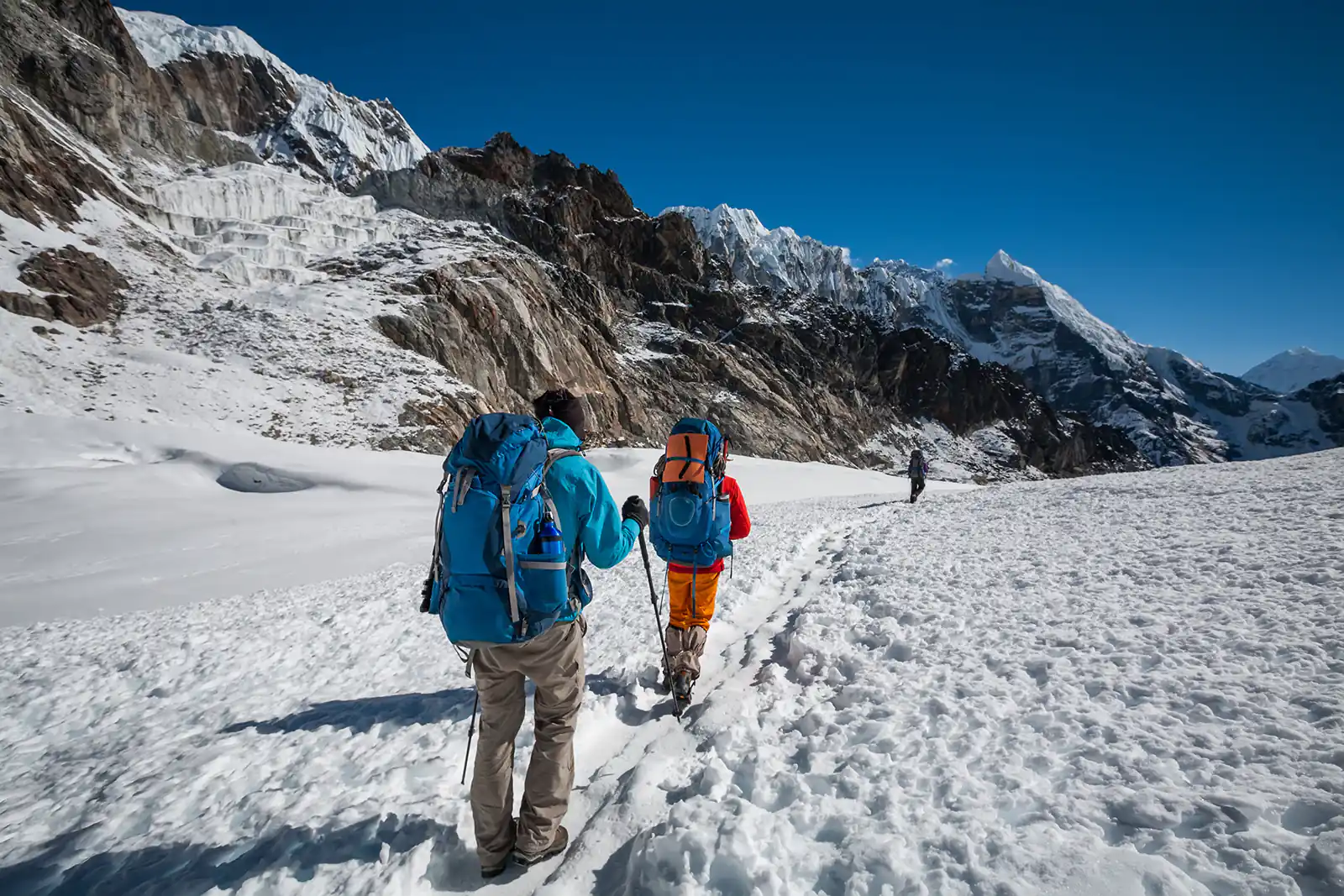
Requirements for Everest Base Camp Trek in January
Your metabolic rate increases in the winter, so you’ll be able to maintain your weight better than you would have been able to in the summer. Therefore, you should continue eating normally. Include enough protein and carbohydrates in your daily diet.
Refrain from becoming hungry. Remember the importance of water. We may all benefit from drinking more water, as it has potent curative properties.
The two together are effective in preventing altitude sickness. Stay sober before, during, and after the hike. Because of the drying impact, the symptoms of dehydration are exacerbated.
Gokyo Lakes Trek
Gokyo Renjo La Pass Trek
Everest High Pass Trek
Clothes that Block the Sun
If you’re planning on making the EBC journey in January, Sun protection gear should be at the top of your packing list. This kit includes sunscreen, a hat, lip balm, and sunglasses with UV protection.
During the day, the sun can be extremely intense at higher elevations. In January, the snow reflects nearly all of the sun’s rays on you. Consequently, your skin will scorch more rapidly.
Apply a high-SPF sunscreen every several hours. The sun can reflect exceptionally brightly in the snow, so you’ll want to ensure your sunglasses block that off.
Stay away from solitary hikes.
You absolutely should not go on a hike by yourself in the cold. In the Everest Region, you’ll find next to no other hikers. Snowfall can even bury the paths. There’s a reasonable probability you won’t find anyone to help if you become lost. Therefore, it is best to trek in a group and hire a guide.
Always dress in a few layers.
Layering is essential for trips like this one in the cold. It’s insulating. You can shed or add layers when you feel too hot or chilly. Changing weather will not necessitate a bag search for you.
Kick Off Your Hike Early
In January, the days are noticeably shorter. As a result, you should get an early start on the hike. By taking this route, you can safely make it to the lodge before nightfall.
Coverage for Your Trip
Having insurance for your trip is a must. Outdoor activities such as trekking entail inherent dangers. Having one will reduce the potential for harm and put your mind at ease. If you plan to visit Nepal, check that your insurance policy covers trips to 5,000 meters or greater altitudes.
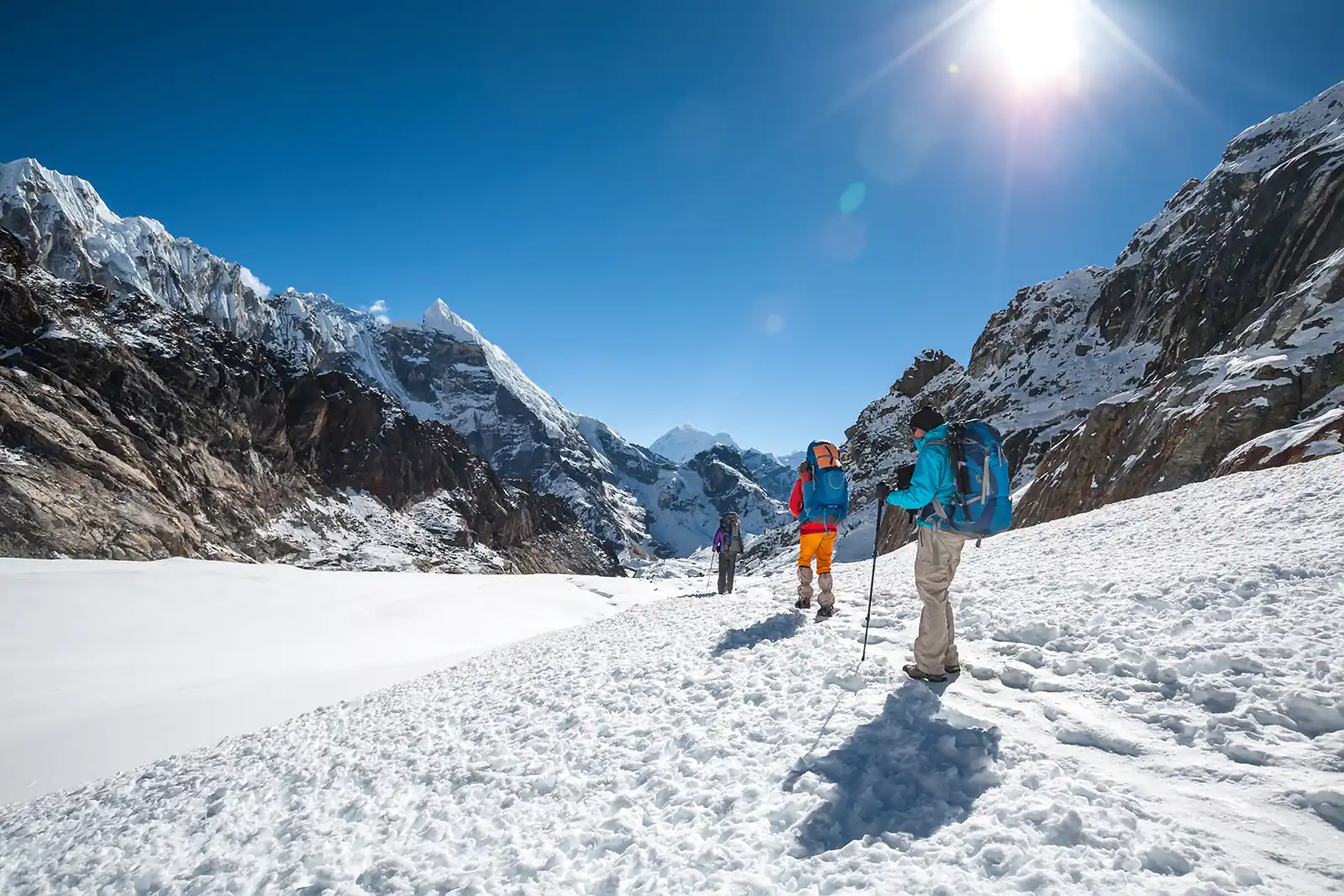
Preparation for Everest Base Camp Trek in January
Always factor in extra time for anticipated delays when planning a winter journey in January. In the winter, the weather could be more reliable. Heavy snowfall on trails or in the area might cause travel delays or cancellations.
Employ a Porter
Extra gear above what you would typically bring on a hike of this type and altitude is required. Your gear and provisions for the winter journey will consist of these items. And the snow that you’ll be walking on is real. Snow can make the paths icy and sloppy.
As a result, hiring a porter to help transport your bags will lessen your burden. Plus, you’ll be able to give full attention to your hike and the routes along the way.
Scheduled Acclimatization Time
It would help if you had a well-thought-out plan for acclimatization. Stay consistent with the plan, and execute it every day. Spend at least three days in Namche Bazaar and another day in Dingboche to get used to the altitude. As a result, the likelihood of experiencing high altitude sickness will decrease.
Discounts
The month of January is considered off-peak. This means fewer people using the trails, flights, and lodgings. Therefore, with more comfortable lodgings, the prices for these amenities will be lower.
Reduced airfare is one example, as are discounted or free spa services. Keep an eye out for them, and be willing to haggle to get the most incredible deals.
Stride With Caution and Concentration
Due to the snow and ice on the paths, it can be challenging to make it to EBC on foot in January. Snow on the pathways could make them dangerous to walk on. Therefore, pay attention to the paths and tread lightly as you travel. This is particularly true in the days following a significant snowfall.
Following your guide and other experienced trekkers is the most excellent way to ensure your safety on the trail.
Getting Ready, Psychologically and Physiologically
The EBC trek is a high-altitude, moderately long-term endeavor. In addition, January is an excellent time for a snow hike. That’s why it’s crucial to exercise, like jogging or walking, and maintain healthy body weight. Make sure to start these preparations three to four months before going on your journey.
The more physically fit you are, the easier the journey will be. Aside from the obvious benefits to your body, the mental preparation you receive from your training will make the journey easier. In the end, it ought to make you a better worker.
Plane Trips to Lukla in January
However, in January, flights to Lukla will be available from Kathmandu, which is different during the peak hiking season. Weather in January is primarily stable and precise, except for fog in Kathmandu and snow in Lukla, which might result in delays or cancellations. Set a day aside, but know that the likelihood of actually using it is low.
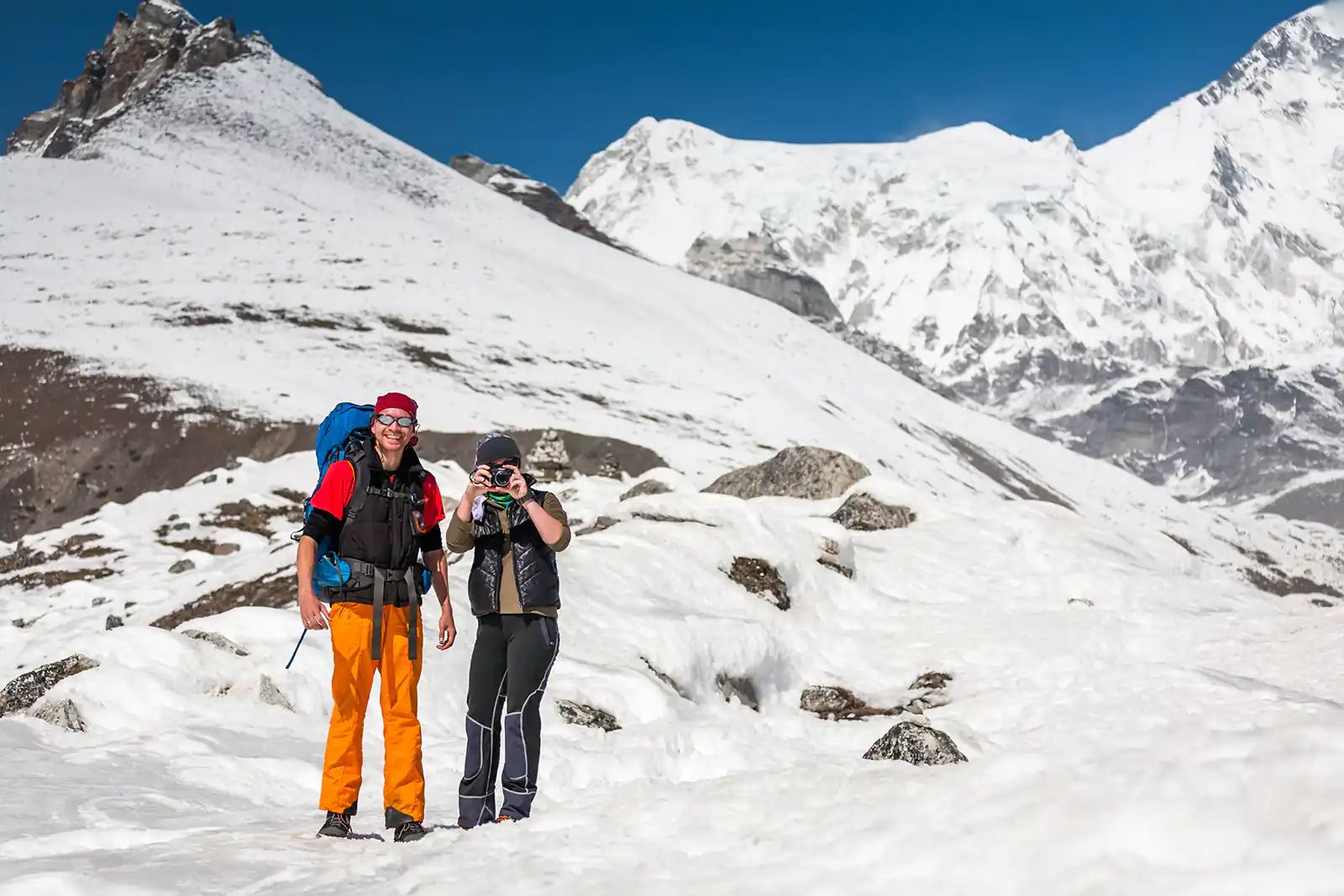
Lodging and Provisions
Fewer people are on the trail in January, so that the tea houses will be empty. You can make use of the tea house’s amenities and spend more time getting to know the people while staying in the cozy and warm room provided.
You can spend the night in relative comfort at one of the local tea houses, where you’ll find all the essentials for a good night’s sleep. There are two single beds in each room; depending on the building’s elevation, guests may have access to an en suite or shared bathroom. It’s worth noting that as you gain altitude, the amenities you have at your disposal will become increasingly rudimentary.
All bedding, including mattresses, pillows, and blankets, is of the highest quality. No one else will be at the tea house, so feel free to take as many blankets as you like.
Device charging stations and reliable internet access are available but have yet to be guaranteed. Tea houses’ solar panels may need more power to charge your electronics on cloudy days.
There are options for both western and conventional toilets. You can find a nice, clean toilet with a western-style flush while you’re at a lower altitude. However, squat toilets, which require you to fill a bucket and pour it to flush, are commonplace at higher altitudes. Always have some toilet paper on you.
Bring hand sanitizers with you just in case the water freezes overnight.
However, the food is excellent and freshly prepared. Local cuisine, known as Dal Bhaat, is highly recommended. It consists of steamed rice, lentil soup, curries, and pickle. You’ll need a lot of fuel, so taking advantage of the area’s readily available and nutritious options is a good idea.
Western breakfast options are plentiful. You can purchase Nalgene bottles or bring your container with water. The inability to reuse the bottles for hot water and the potential for trail pollution make plastic water bottles a poor choice.
If you’re feeling parched during the day, stop by the tea house and ask for some hot water to fill up your bottle with. Don’t risk becoming sick by ingesting water from the tap or the river. Ensure you have a water purification tablet to use the municipal water supply.
Conclusion,
January is an excellent month for Everest Base Camp climbs due to the relative solitude and quiet. It adds a new dimension of excitement and adventure to the traditional hiking experience. January is the month for you if you don’t mind the cold and are searching for excitement on the classic route.
Please get in touch with us for further inquiries about the Everest Base Camp Trek in January. We’re here to help with this or any other trek or tour you’d like to do in Nepal, and we’re available year-round. Plan your unique route to the summit of Everest in January.

